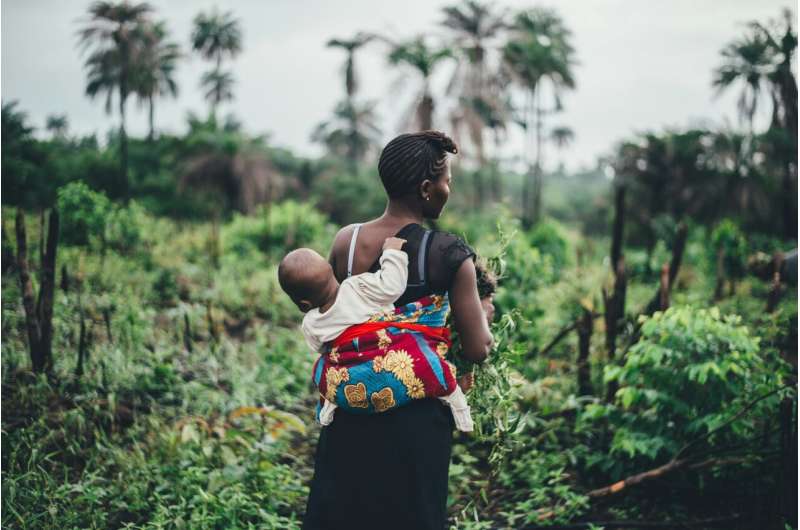This article has been reviewed according to Science X's editorial process and policies. Editors have highlighted the following attributes while ensuring the content's credibility:
fact-checked
trusted source
proofread
Decline in global adolescent fertility rates is counteracted by increasing teen births in Sub-Saharan Africa: Study

A new report from Columbia University Mailman School of Public Health and the Columbia Aging Center, with colleagues from the Norwegian Institute of Public Health, highlights a troubling trend: While global adolescent fertility rates have significantly declined, sub-Saharan Africa is experiencing an increase in teen births. This region's share of global adolescent births surged from 12% in 1950 to 47% in 2020, and is projected to reach a clear majority—a full 67%—by 2035.
The findings are reported in the journal Studies in Family Planning.
"This divergence we are seeing is related to limited use of modern contraception, lower education levels, and early marriages, which are still prevalent in this region," said Vegard Skirbekk, Ph.D., professor of Population and Family Health at Columbia Public Health and the Aging Center and principal investigator. "Despite global advancements, the number of teen births remains high and in absolute numbers increasing in regions with rapidly growing populations, significantly impacting the overall global trend."
Sub-Saharan Africa has emerged as the world region with the most teen births, increasing its proportion of global teen births over a 70-year span—a time during which this region's share of the global adolescent population, those aged 15 to 19—grew from 7.5% to 19%.
The researchers analyzed data from the World Population Prospects 2022; World Contraceptive Use 2022; World Marriage Data 2019; and World Development Indicator.
In terms of absolute numbers, the number of births in Sub-Saharan Africa rose from 4.5 million births in 2000 to 6.1 million in 2021. At the same time, it decreased in the rest of the world, from 13.5 million to 6.7 million, from 2000 to 2021.
The persistence of high teen fertility rates in sub-Saharan Africa poses substantial challenges at both individual and societal levels. International organizations, including the WHO and the UN, emphasize the need to reduce adolescent childbearing as part of broader efforts to provide universal access to sexual and reproductive health care and education.
Effective policies are crucial to address this issue, according to Skirbekk and co-authors, such as reducing adolescent childbearing, raising female education levels, increasing the legal and effective age at marriage, and providing free or subsidized modern contraceptives.
"Without targeted interventions, the rising number of births to teenage mothers in sub-Saharan Africa could plausibly reverse global progress in reducing adolescent fertility," according to the researchers.
The number of births to teen mothers in sub-Saharan Africa is expected to continue to increase over the coming decades due to the region's continuing increase of teenage cohorts, outweighing the decline in the teenage fertility rate.
Co-authors are Thomas Spoorenberg, United Nations Department of Economic and Social Affairs and Norwegian Institute of Public Health; Ellen Øen Carlsen and Martin Flatø, Center for Fertility and Health, Oslo; Marcin Stonawski, Cracow University of Economics, Poland and Statistics Denmark; and Vegard Skirbekk, Center for Fertility and Health, Columbia Mailman School and Norwegian Institute of Public Health, Oslo.
More information: Thomas Spoorenberg et al, The Global Adolescent Fertility Decline is Counteracted by Increasing Teen Births in Sub‐Saharan Africa, Studies in Family Planning (2024). DOI: 10.1111/sifp.12273


















